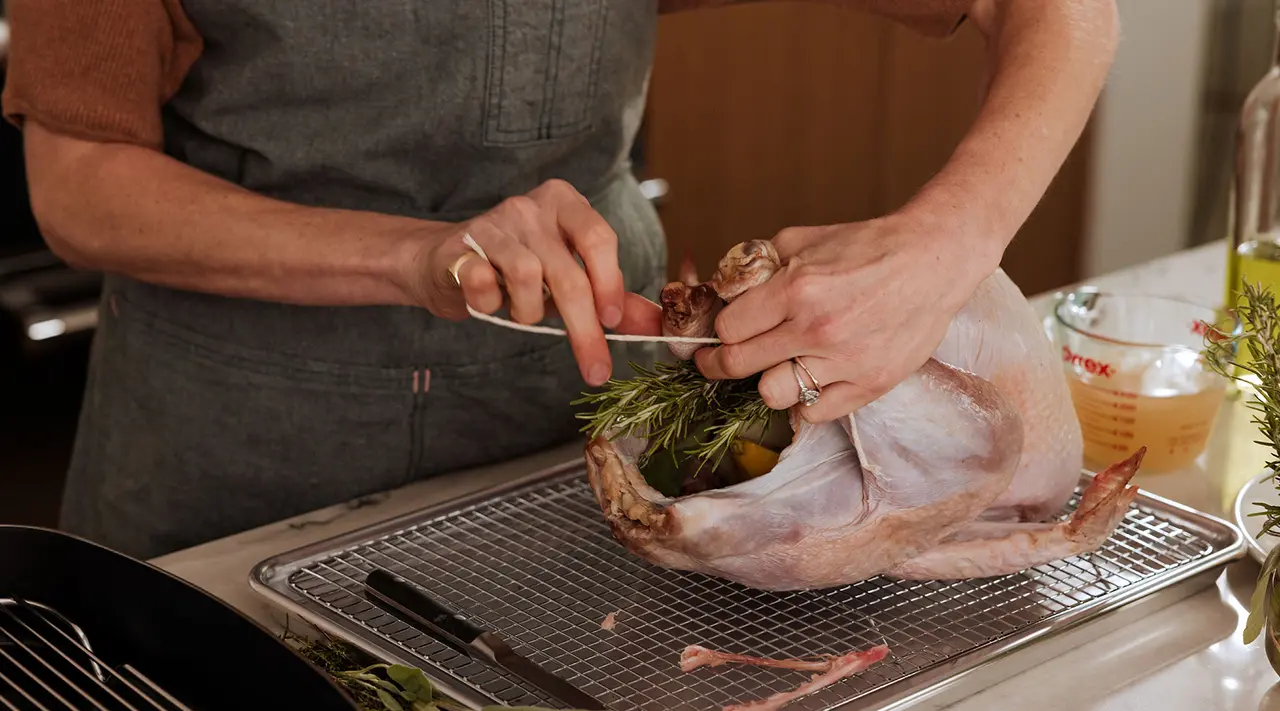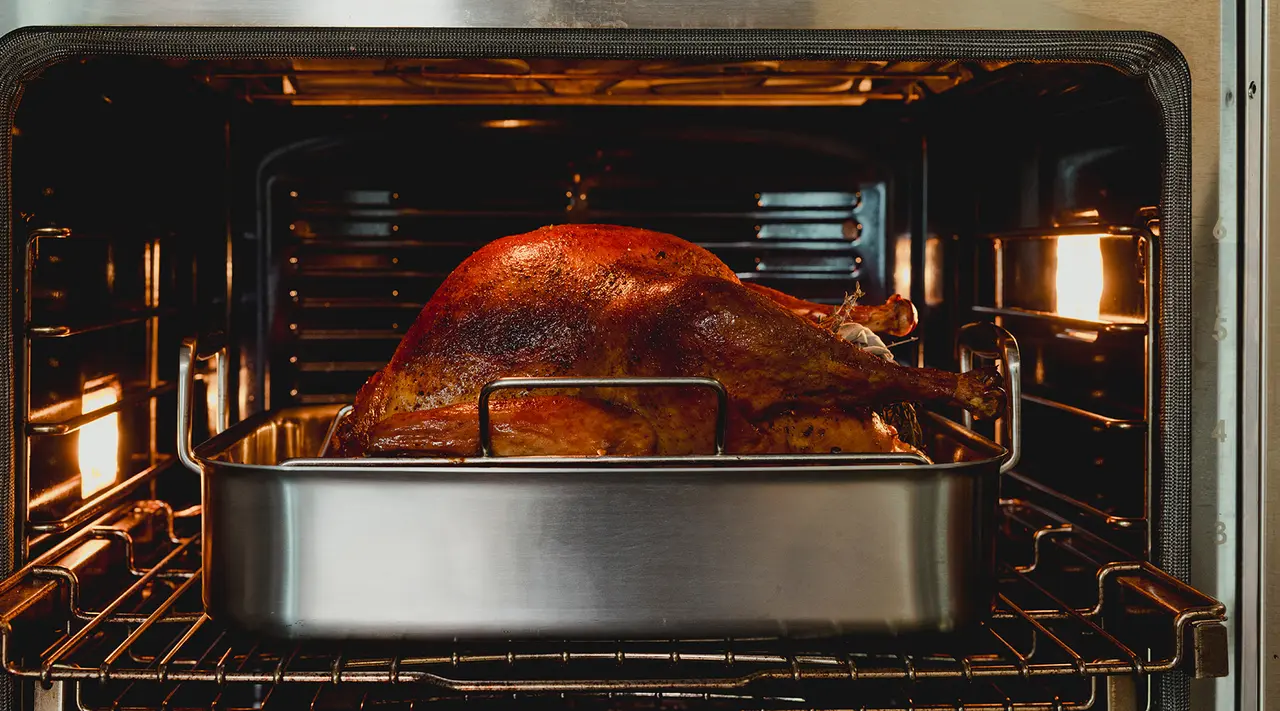When it comes to cooking superlatively tender and juicy proteins, seasoning is one of the most effective ways to add flavor. In other words: it doesn’t matter how premium your local pasture-raised heritage pork is if you squander all its flavor by seasoning it poorly.
Below, we’ll be exploring one of the simplest yet most advantageous methods of seasoning: brining. While you might not know its technical definition, you’ve almost certainly encountered brine by way of pickles—the liquid that pickles are packed in is often referred to as “pickle brine.” In fact, pickles are a great case study for demonstrating the advantages of brining. Not only does it help preserve ingredients, it can also drastically change the flavor, helping transform watery cucumbers into acidic, punchy ferments.
For the full process of how to brine at home, head to our recipe for dry-brined and smoky-sweet Grilled Chicken Wings, featuring a Texas BBQ-style rub and scallion ranch dressing.
First Up: What Is Brining?

At its most pared down, a “brine” is just very salty water, and “brining” is the process of submerging ingredients into said very salty water to preserve, tenderize, and season from the inside out. Other flavorings and seasonings can be included, but they’re not necessary.
Salt was introduced to the human diet only around 5,000 years ago, and for most of that time, brining was primarily a method of food preservation yielding shelf stable proteins like salt pork, bresaola, or bacalao (dried salted cod). Since then, brining has become less of a vital food storage process, but it’s still relied upon for improving the flavor and texture of proteins and produce.
You can also brine without water—this is called dry brining, and it’s basically just salting your food well ahead of cooking. Around Thanksgiving each year, dry brining experiences a cyclical spike in popularity, thanks in large part to Chef Judy Rogers of San Francisco’s Zuni Café. There, her famous dry-brined whole roast chicken—which feeds two and comes with a 60-minute wait—has been a constant on the menu since 1987.
The chicken is so flavorful and tender that in 2006 Los Angeles Times Food Editor Russ Parsons applied Chef Rogers’ dry brine method to a Thanksgiving turkey. Turns out that it does pretty much everything a wet brine does and more, except better and with less fuss. Since then, it’s been the “secret” to many tender, juicy, and Rockwellian turkeys.
Your Two Options: Wet vs. Dry Brine

Wet Brining
The traditional method of brining—which, for the sake of clarity, will be referred to as “wet” brining going forward—involves submerging ingredients in a saline solution for an extended period of time. The salt water permeates the chicken, bringing the dissolved salt along for the ride. This allows you to season thoroughly and evenly, and does a great job of keeping everything moist even after hours in the oven. This takes a while—usually 1-2 days.
Wet brining works especially well on cured meats like corned beef and pastrami, but it’s also applicable to both lacto-fermented and quick pickles.
Dry Brining
Dry brining, as the name suggests, brines without liquid. Instead, ingredients are salted heavily a day or two before cooking and left uncovered on a wire rack in the fridge.
Here’s how it works: within a few minutes of salting meat, moisture beads on the protein’s surface. Shortly after, the moisture will dissolve the salt, effectively creating a brine made of the meat’s own juices. Over the next 24-48 hours, the brine reabsorbs into the meat, where it performs all the same tenderizing and flavor maximizing functions as your standard wet brine. Any excess moisture evaporates, leaving behind a dry skin that will crisp and caramelize perfectly. All this, minus the risk of diluted flavor that comes with wet brining.
In her recipe for Grilled Wings, Culinary Director Rhoda Boone also includes baking powder in her brining process, which augments the tenderizing and crisping action that a dry brine introduces.
Which Brine Is Best?

Nine times out of ten, we’d opt for a dry brine. It generally requires less fridge space, and results in deeper, fuller flavors. And because there’s no added liquid, ingredients crisp and caramelize much more readily.
So, why would you ever bother with a wet brine? By submerging proteins in a brine for an extended period, you’re able to thoroughly season and tenderize the meat—this is especially helpful for lean and dry cuts of poultry and pork. Thanks to all the added liquid (which could range from buttermilk to apple juice, by the way), wet brining is a bit faster and yields a juicier protein. In some cases this extra moisture is necessary—for example, a liquid brine simultaneously softens and seasons dense vegetables so they grill without burning. But where crispiness is a factor, a wet brine will be too juicy and may result in a slightly waterlogged texture.
Ready to Cook?
Now that you know how brining works, you're ready to tackle any protein, from your Thanksgiving turkey to the Made In Studio's smoky-sweet grilled wings.





















